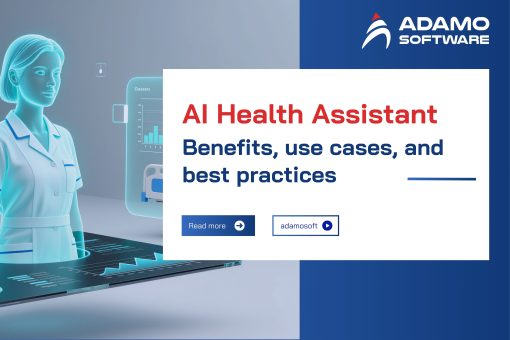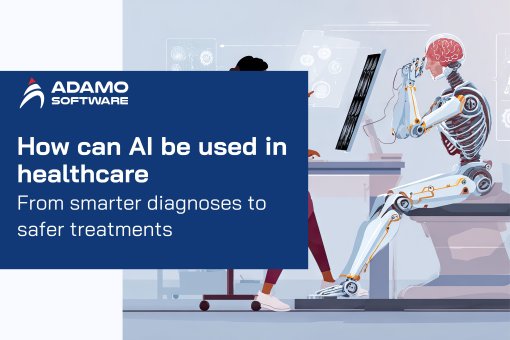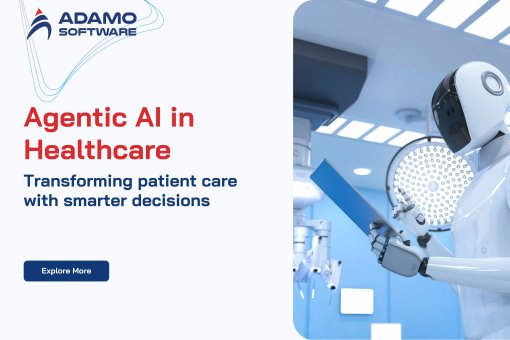Healthcare Software Testing Plan to Improve Operation
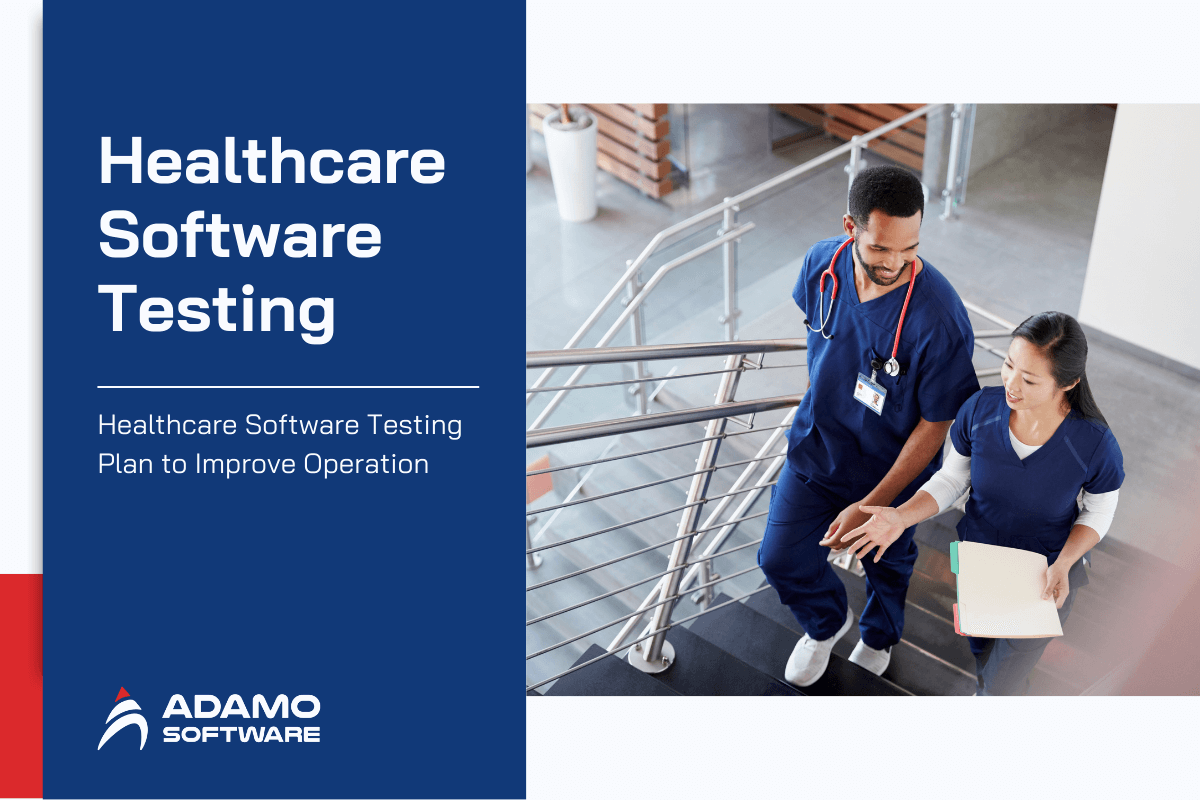
In contemporary society, where change in healthcare is almost cultural, it is crucial to have dependable and efficient software systems. Healthcare software is necessary for patient treatment, record keeping, and the operation of a healthcare facility. Therefore, the quality and performance of these applications need to be improved through proper healthcare software testing. In this extensive review, the fundamentals of healthcare software testing are examined.
Healthcare software testing is essential to remove flaws that may endanger the patient’s life or privacy. It confirms the correct input-validation behaviors of the healthcare applications under certain conditions. Ensures applicational compliance with medical industry standards. Testing services that range from functional and performance testing to security testing and usability testing are incorporated into healthcare software testing. Therefore, healthcare software testing provides all the facets required to deliver top-notch healthcare technology. In these chapters, you will learn about all types of testing, how to create a testing plan, and the peculiarities of dealing with testing difficulties.
A healthcare software testing plan helps organizations be more effective. It improves production processes, enhances patients’ life quality, and follows healthcare legislation. Whether creating or maintaining healthcare software, this guide can help you redeem quality healthcare software testing.
I. Why is Healthcare Application Testing Important?
Software testing is crucial in today’s healthcare sector. The reason is that applications are used for all parts of the patient’s journey, including records, and diagnostics. These applications must work as they should without security problems. Security issues could cause problems for patients and healthcare services.
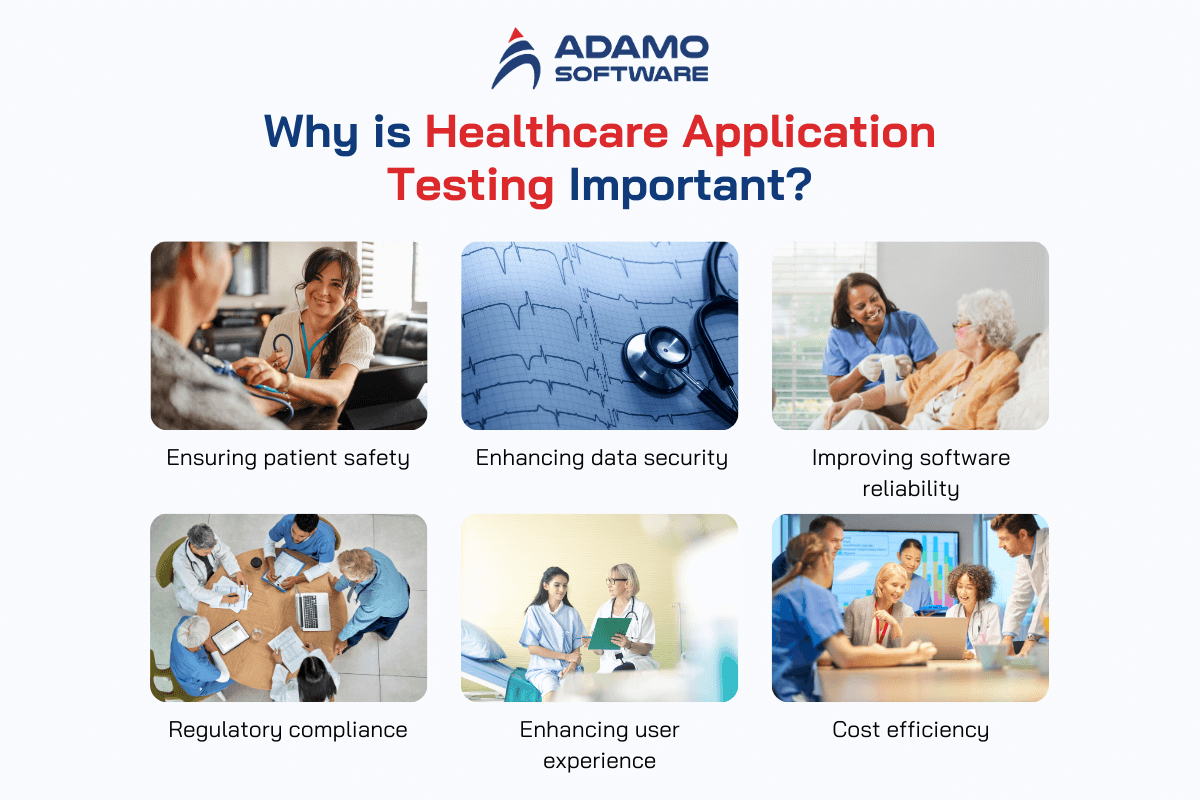
1. Ensuring Patient Safety
Among the crucial objectives of healthcare software testing, the most important one is patient safety. Any problem in the healthcare software can disrupt the diagnosing process, cause failures in treatment, or cause data leaks. The former helps to predict and mitigate these problems before the software release, which minimizes the negative impact on patients.
2. Enhancing Data Security
Health procedures involve large volumes of highly confidential records that pertain to the patient’s medical records, identity, and monetary accounts. This data is a prime target and a perfect opportunity for the authors of cyberattacks. Adequate checks and validations of healthcare software protect the application against breaches or unauthorized access and regulatory acts such as HIPAA and GDPR.
3. Improving Software Reliability
Reliability is another important dimension in developing models. It determines the dependability of the models in delivering the expected results. Pressure on human resources is another issue. The medical field needs applications since they perform significant and delicate functions such as tracking the patient’s vitals and prescriptions. The failure of the software used in it compromises operations and ultimately the delivery of patient care. The application can perform well under varying circumstances, and with varying stress, proper healthcare software testing is carried out.
4. Regulatory Compliance
Communication applications in healthcare must meet certain standards and regulations set by governing bodies to prove their safety and effectiveness. Healthcare software testing guarantees software complies with such standards to avoid legal problems and fines. This is not only a legal requirement but also a sign that indicates the quality and reliability of the organization’s products and services.
5. Enhancing User Experience
These are clinical applications; physicians and patients are on the other end of these applications. Thus, any bad interface can lead to negative outcomes. The user interface and experience can be tested to ensure the software is friendly and easy to use in healthcare delivery to enhance efficiency.
6. Cost Efficiency
Catching problems during the developmental stage is much cheaper than during deployment. So, when bugs are identified in a healthcare organization’s system, lots of money can be saved in addition to preventing downtime.
In conclusion, healthcare software testing is important in the global healthcare system. It contributes to overall patient and data protection and software credibility. Healthcare software testing also requires adherence to the laws and joyful usage, along with monitoring costs. This implies that, with healthcare software testing, better, safer, and more efficient services can be delivered to the intended patients.
II. Types of Healthcare Software Testing
Healthcare software testing is multifaceted and entails several testing categories. This guarantees that the application is strong, impervious to cyberattacks, and easy to use. Both fundamental types of testing assess the product in different aspects and define the defects before delivery.

1. Functional Testing
Functional testing verifies whether the software activities match the laid-down requirements. This type of healthcare software testing verifies the individual features of the application. In this case, it demonstrates aspects of the healthcare application. Functional healthcare software testing the authentication features checks, patient record updates, and input/output functions of the application. It affirms that each function yields the desired outcomes and functions properly in specific scenarios.
2. Performance Testing
Performance testing checks how well the software operates and how it handles the increase and decrease of loads. This type of healthcare software testing determines how the application stands in issues with various users and data volume. This is stress testing, load testing, and endurance testing. It shows how the software will operate under regular and full usage loads.
3. Security Testing
Security testing involves testing the software’s security elements. This helps identify the strengths and weaknesses of the software’s security strategy. Healthcare data is usually highly confidential. Security testing in healthcare software is crucial. It prevents the leakage of patient data to cybercriminals. This includes ethical hacking, vulnerability assessment, and risk assessment. The goal is to ensure software meets specific standards. These include the Health Insurance Portability and Accountability Act (HIPAA) and the General Data Protection Regulation (GDPR).
4. Usability Testing
Usability testing concerns the external aspects of a program. It focuses on its user-friendliness. Users engage with the healthcare software to find any usability problems. The objective is to improve the software’s effectiveness and user satisfaction.
5. Compatibility Testing
Compatibility testing checks if the healthcare software runs properly on different devices and operating systems. It ensures the application behaves and functions similarly across chosen platforms and devices. Testing involves numerous configurations to confirm coherence.
6. Regression Testing
Regression testing verifies that newly developed code does not harm earlier functionalities. This type of healthcare software testing is vital during the development of life cycle. It is often characterized by continual revision. Regression testing ensures that as developers implement changes, the software does not introduce new faults.
7. Compliance Testing
Audit testing proves that the healthcare software complies with various regulations and standards. This testing checks compliance with legislation like HIPAA and GDPR. Regression testing verifies there are no legal concerns and software is safe to use.
Healthcare software testing is multifaceted. It includes the types of testing that target different aspects of the software. By adopting a well-organized plan, healthcare organizations can cover nearly all facets of testing. This allows them to build and deploy high-quality applications that meet customers’ needs and set standards.
III. Consider Professional Services for Healthcare Software Testing
Thus, in healthcare software testing, it is reasonable to consider professional services. Professional testing services involve sophistication, better tools, and skillful methods. These make your healthcare application reliable and compliant. These are reasons to opt for professional services in healthcare software testing.
1. Expertise and Experience
A key factor is that professional testing companies have highly qualified personnel. They have a large amount of experience in testing healthcare software. They understand the dynamics of the healthcare environment. Their professional experience guarantees thorough functionality, performance, security, and standards tests. Contacting our specialists ensures your application is close to perfection.
You can explore more about “Outsourcing Healthcare Software Development: When it works” here.
2. Advanced Testing Tools
Professional services perform tests with tools and technologies unavailable in the company. These tools allow effective approaches to healthcare software testing. This includes automated testing, load testing, and security testing. Using these tools makes the work of a professional tester easier. They can address problematic areas more effectively.
3. Comprehensive Testing Approach
Professional testing services use formal and rigorous approaches. They follow standard processes and guidelines. This guarantees all important facets of the product are checked. It encompasses functional testing, performance testing, security testing, usability testing, and compliance testing. This makes it a more comprehensive evaluation of the application.
4. Faster Time-to-Market
The risk of outsourcing your healthcare software testing to experts is minimal. It helps you shave time off the testing process and time-to-market. Professional testers work faster and identify defects easily. This helps the software go through deployment in less time. This speed is critical given the nature of healthcare as a competitive industry. Efficiency can be improved with timely delivery.
5. Cost-Effectiveness
It is more cost-efficient to outsource healthcare software testing to third-party providers. This is better than developing a dedicated internal testing team. Professional testers come with their tools, skill sets, and resources. This limits the need to invest heavily in testing assets. They also intercept costly fixes and delays before they occur later in the development cycle.
6. Focus on Core Competencies
Outsourcing healthcare software testing enables the internal team to focus on strategic activities. Your developers and healthcare professionals can focus on creating new ideas. Testing experts concentrate on refining the software.
7. Ensuring Regulatory Compliance
There are numerous industry legislations and standards that healthcare software must meet. Independent testing services are aware of these rules. They ensure the software complies with regulations. This is important to avoid costly compliance issues. It also builds trust from users for your application.
To sum up, outsourcing healthcare software testing to professional services has advantages. These include increased expertise, better instruments, coverage of all risks, faster time to market, cost efficiency, better focus on business competencies, and compliance with rules.
IV. Step-by-step Guide to Healthcare Software Testing Plan
Designing a healthcare software testing strategy is essential. It ensures the development of an efficient and secure software system. The procedure of testing is described in the following guide. This guide embraces the key phases of the efficient testing process.
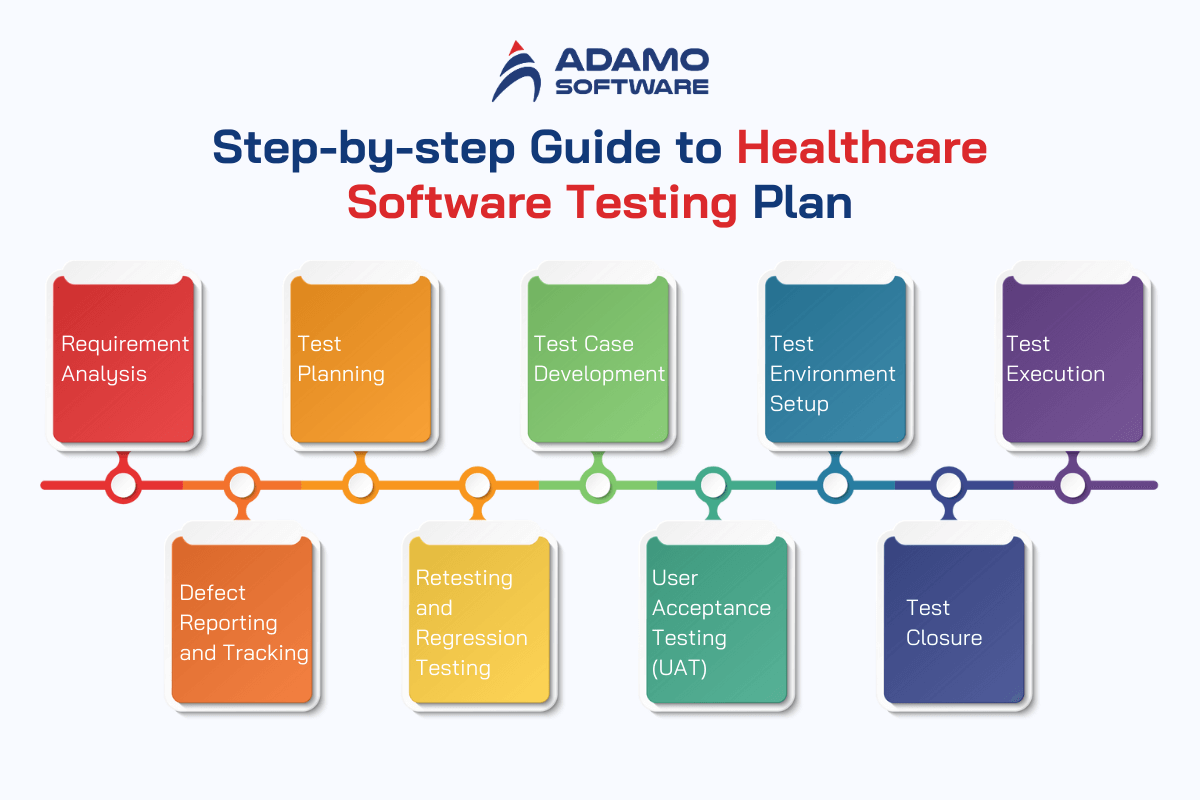
1. Requirement Analysis
The first technique used during healthcare software testing is static testing, and the first under this technique is requirement analysis. This includes the identification of the software’s functional and non-functional specifications. Determine all the stakeholders including the health care practitioners and find out from them what the software should be able to accomplish. It is recommended to record these requirements as precisely as possible. These requirements will help during the other phases of the test.
2. Test Planning
A test plan or test strategy represents one of the most important steps. It defines the general approach to healthcare software testing. The plan must be detailed and include the test’s scope, goals and objectives, resources needed, time frame, and expected outcomes. Determine which types of tests are to be performed. These include functional tests, performance tests, security tests, usability tests, and compliance tests. Identify as much as possible the areas of testing that will be required. Assign the testing tasks to the testing team. Equip them with what they need and get the professionals who will assist the team.
3. Test Case Development
During this phase, it is mandatory to establish correct test cases associated with the requirements and test plan. For each test case, there should be I/O pairs, procedures, and anticipated results of the test. In writing test cases, consider all aspects of the software as well as the extremities and errors that are likely to be encountered. This makes it easy to discover additional defects that might not have been easily observed during the assessment.
4. Test Environment Setup
The preparation of the testing environment is essential for testing healthcare software with high precision. It is advised to set the test environment very closely to the production environment to yield relevant results. This involves hardware installations, software installations, hardware and software networking, and database installations. Some aspects may include confirming that all the tools and frameworks that are to be employed in testing are well configured and installed properly.
5. Test Execution
Upon the completion of the environment phase, transition to the test phase. Perform the test cases and record for each case ‘passed’, ‘failed’, or ‘not applicable’. Document any variance in the output from the expected result during the healthcare software testing as defects. Rank these defects according to how critical they are to the operation of the application. Depending on the type of problem, consider continual supervision and reporting to the development team to resolve these issues.
6. Defect Reporting and Tracking
Essentially, there is a gap observed in the literature regarding the connection between defect reporting and tracking in relation to healthcare software testing. When choosing the tool to track defects, be certain it can be easier to record those of the defective items along with the descriptions and expected replication process, and even photos at times. Monitor their state or progress until they are closed. Communicate with stakeholders about the testing status and important things that came up.
7. Retesting and Regression Testing
Once some defects are identified and sent for repair, retesting prevents the problems from reoccurring. Regression testing makes certain that new issues within a program’s functionality or performance do not negate previous build contentions. Carry on with integration and regression testing until the software is up to the desired quality of the standard that is expected.
8. User Acceptance Testing (UAT)
User Acceptance Testing (UAT) is the last phase where actual users test the application in a real environment with restricted results. This phase of healthcare software testing focuses on the fact that the software developed will need to meet the expectations of the users. The software must be effective when used in a real-life scenario. Gather data from the users and fine-tune the final implementation before the full launch.
9. Test Closure
The final stage among all the stages in the software development life cycle is test closure. Conclude all the testing procedures and make sure all the set objectives are met. Come up with a detailed test summary report. Such reports should include the outcomes achieved, the varieties of defects found, and the quality of the software developed. Have an official meeting to go through the results with stakeholders, discuss the results, and collect data for further enhancements.
This paper provides a step-by-step guide to healthcare software testing. A structured approach is more efficient for explicit testing of functionality, performance, security, usability, and compliance.
V. Challenges in Healthcare Application Testing
In the context of HIS, software testing is quite different and seemingly more difficult than other industries and types of applications. The requirements are high, and the applications are aimed at supporting the healthcare industry while their function is frequently directly connected to people’s lives and health. Meeting these barriers will help reduce errors and improve software security, thus increasing its efficiency. Here are some of the main challenges faced during healthcare software testing:

1. Regulatory Compliance
Another interesting characteristic of healthcare software testing is that it is mandatory to conform to several requirements. As for healthcare applications, they should follow certain rules and regulations, for example, HIPAA rules in the USA and GDPR in Europe. The above regulations demand that the company adhere to high standards concerning protecting data and protection from hackers. Meeting these regulations is not easy, particularly in the facet of testing and documenting the software.
2. Data Security and Privacy
EHR information in healthcare software involves sensitive and essential information of patients. Thus, such questions as data protection and access rights are highly appreciated. Preventing the leakage and unauthorized access of this data has emerged as an important factor in healthcare software testing. Security testing must check out any weaknesses that might make a company expose important data or become a target for an attack. Encryption tests, data transfer, authentication, and other authorization procedures are part of this testing.
3. Integration with Legacy Systems
Most healthcare organizations have old frameworks that should integrate well into new ones to achieve efficiency. Making old and new systems compatible or ensuring that they seamlessly integrate is always challenging. Healthcare software testing must check its capabilities to interact with other software without creating problems or presenting data discrepancies.
4. High Availability and Performance
The healthcare application most of the time runs in an environment where it can ill-afford any kind of disruption. The first and most important goal on which healthcare software testing stands is the matter of coming across high availability and efficiency depending on the loads. Load testing is done after testing and is also a form of validating the application software. It must properly mimic actual usage so that when the application is put to the load, no bottleneck shows up.
5. Complex Workflows and User Scenarios
Most healthcare processes involve several actors and transactions. Testing these workflows entails a good understanding of the healthcare environment and the users’ requirements. This means that software testing encompasses a good number of aspects that relate to healthcare, including admission, treatment, finances, and the reporting of patients. Fulfilling all these capacities with the correct results is paramount for the software.
6. Interoperability
Healthcare applications must integrate with other systems used in healthcare organizations, like electronic health record systems, laboratory information systems, picture archiving systems, and communication systems. Managing to achieve high compatibility with these systems becomes a further challenge. It is also crucial that the testing of healthcare software checks if data can be exchanged and understood by the different platforms and standards.
7. Frequent Updates and Changes
Most business environments are dynamic since new rules, laws, materials, techniques, and products are always established or changed, and the healthcare industry is no exception. This responsive world requires the frequent use of healthcare software to be up-to-date and functional. Preventive checks must be carried out to ascertain that modifications do not bring about new problems or interfere with other functions. This makes healthcare software testing a continuous and resource-intensive activity, as many people would wish it to be.
8. User Acceptance
This form of testing is important to guarantee that the software solutions developed will be suitable for the intended operation by the end users, including healthcare professionals and patients. The wide acceptance may be difficult because of users ranging from a doctor to a nurse, an administrator, or a patient. A proper approach to software testing in healthcare requires the active incorporation of the actual users of the program to get feedback and for relevant changes to be made about general usability and satisfaction.
Consequently, healthcare software testing is exposed to various difficulties, often having to deal with compliance, security, integration with legacy systems, availability, intricate working processes, compatibility, functionality updates, and, finally, acceptance by the users. Combating these maladies calls for a collective and systematic strategy that entails a fancy approach to guarantee that the software system is viable, secure, and productive in the delivery of quality healthcare services. To summarize, these challenges make it possible to deliver strong applications that support patient care and organizational objectives in healthcare organizations.
VI. Expert Tips for Healthcare Software Testing
Software testing is a very sensitive and vital aspect in the development of healthcare software. Understanding this will ensure that healthcare software is of high quality. To minimize the risks and achieve the maximum result, numerous recommendations for achieving the best quality and reliability are applied. Here are some essential tips for effective healthcare software testing:

1. Understand the Regulatory Landscape
Healthcare software can only be developed, sold, and used under certain conditions regulated by different acts and standards, including HIPAA, GDPR, and FDA. Start with a deep understanding of all these regulations. and integrate their guidelines into your testing strategy. This guarantees that your software complies with all the standards. This is vital for it to be accepted and operational in healthcare.
2. Implement Comprehensive Security Testing
As mentioned earlier, healthcare data is sensitive. Thus, effective and efficient security testing cannot be overemphasized. Carry out proper security audits to know the risks that can prevail and the weak points that exist. It should be validated with penetration testing, vulnerability assessment, scanning, and code reviews. These methods check if the software can handle cyberattacks. They also verify if the software protects patient data. The security of healthcare software should be a top priority due to the necessity of trust and compliance.
3. Emphasize Performance and Scalability
Some healthcare applications are characterized by a heavy flow of information and many users. The usefulness of performance testing originates in the recognition that software must perform its work under different circumstances. Some things that can be done include testing response times, throughput capability, and resource use. This helps to determine the presence or absence of performance issues. Scalability testing guarantees the capabilities of the application’s growth with the increasing number of customers during application usage.
4. Inform Usability and User Experience
For healthcare providers to work optimally, they require easy-to-use and efficient software to meet certain tasks. It is therefore necessary for healthcare software testing to include usability testing as one of the crucial aspects. It is important to talk to proper users of the system, who may be medical practitioners, nurses, or administrative staff, and sample their feedback. Consider such factors as usability and navigability of the software to ensure that the developed software is utilitarian.
5. Automate Regression Testing
Since keeping the software present in healthcare implies frequent updates and changes, we must continuously test the software. Regression tests allow one to make sure that new changes do not introduce new bugs or interfere with existing functionalities. Many automated testing tools can run the test cases very quickly. They can give fast feedback, so the manual work is not significant. This improves the overall quality of healthcare software testing because of the efficiency that comes with model tests.
6. Incorporate Real-World Scenarios
Indeed, as the problems discovered during testing signify, it is possible to stumble upon certain inconveniences in a healthcare software system when applying the software to real-life conditions. These issues are not obvious when testing the software in an ideal environment. What has not been done is the actual use of the software by creating probable scenarios that mirror real workplace environments and situations. This helps pinpoint weak links and assess the software’s suitability for real-life situations. This procedure ensures that the independently developed software is fit for deployment in real healthcare settings.
7. Continuous Monitoring and Improvement
Software testing in the healthcare field should not be limited to the first version of the product. It is recommended to carry out the procedure of ongoing assessment to regularly assess the performance of the software developed and predict new problems, if any. Optimizations based on the feedback from the software’s users and performance statistics prevent the software from becoming obsolete. Sustainability enables the software to update occasionally to meet new tendencies and necessities.
8. Collaborate with Stakeholders
To implement efficient and effective healthcare software testing, all stakeholders, such as developers, testers, practitioners, and regulatory authorities, must be involved. Constant reporting and communication also assist in ascertaining that the developed software fulfills all the necessary needs and the project’s goals. It is observed that when people work cooperatively during testing, the level of testing is raised to a higher level. The application developed becomes more perfect.
9. Leverage Professional Testing Services
It may be advisable to incorporate professional healthcare software testing services for better testing results. Testing teams with specialized skills, equipment, and techniques can make a profound difference to the quality of your software. They can perform compliance and security testing. They can also perform performance and usability testing. These services provide complete testing solutions.
Thus, executing these recommendations and best practices for healthcare software testing, as outlined by genuine specialists, will contribute to the creation of secure, compliant, and user-friendly software. By focusing on regulatory compliance, security, performance, usability, and improvement of the software, one can create a healthcare software solution that will be useful for doctors, healthcare workers, and patients. Trustworthy healthcare software testing improves the software quality and positively affects the healthcare system and patients.
VII. Get Help from the Adamo Healthcare Software Testing Team for a Better Patient Experience
Efficient healthcare software testing is crucial to guaranteeing the appropriate and secure operation of healthcare applications. Working with a team such as Adamo will greatly boost the quality and stability of your developed software. Here’s how Adamo’s healthcare software testing services can benefit your organization:

1. Comprehensive Testing Services
Adamo generally has a complete list of services concerning healthcare software testing: functional testing, performance testing, security testing, and usability testing. Their team is equipped with state-of-the-art test tools and methodologies that can test all aspects of your software to the required standards and regulations.
2. Expertise in Healthcare Compliance
Adamo’s healthcare software testing team is aware of numerous healthcare regulations, including HIPAA, GDPR, and the FDA. They make sure that your software is on par with these regulations. These regulations safeguard patients’ data as well as medical requirements. This enables them to reduce expensive mistakes. They achieve this primarily based on their knowledge of the regulations.
3. Customized Testing Solutions
Adamo offers bespoke solutions for testing the areas important to your healthcare software development. They fully collaborate with your team to determine your application’s peculiarities and issues. This way of cooperating guarantees that testing will be tailored to the client’s goals and provide optimal outcomes.
4. Advanced Security Testing
This is because the application is to be used in health services. Hence, it is necessary to put much emphasis on testing the software’s security. The security of its clients’ data is one of the top priorities for Adamo. This is why its specialists perform thorough security audits. They determine threats and risks. They help to protect patients’ confidential data and build an invulnerable defense against cyber threats to your software.
5. Performance and Scalability Testing
Adamo also provides a specific service called performance testing. This helps your software stand the strain of many users and a large amount of data. These check for response time, resource use, and the capacity of your application when put under different conditions. This forms the basis for the proper scaling of the application. It is effective regardless of the number of users accessing it at any time.
6. User-Centric Usability Testing
Adamo also focuses on usability testing. This is to guarantee that people experiencing issues with the software use the healthcare software in the best manner. They collect opinions from the real users, which are healthcare employees, on certain aspects that require amendment. This tactic benefits the development of truly user-oriented programs. It can better streamline work processes and people’s experiences.
7. Ongoing Support and Maintenance
Adamo provides additional consulting and technical support services after the implementation of healthcare software. This is to guarantee that it is efficient and updated. The software is supervised, and possible problems are fixed without delay. This is a proactive approach to maintaining the high quality of the software. It ensures it meets the requirements in its further usage process.
8. Proven Track Record
This healthcare software testing servicing company, Adamo, has been in the field for many years. Therefore, they have all that it takes to provide quality services. They have such a pool of expertise and a passion for value. It ensures it meets the quality of their software and improves the lives of many patients.
Adamo’s healthcare software testing services boost the dependability, security, and user-friendliness of your healthcare software applications. Their testing services cover all the grounds. They possess adequate knowledge of healthcare compliance and focus on the user interface of the software to guarantee the highest quality. Utilizing Adamo’s team of professional testers means the client can confidently deliver the best patient care. This is due to the assurance of top-notch tested software.







